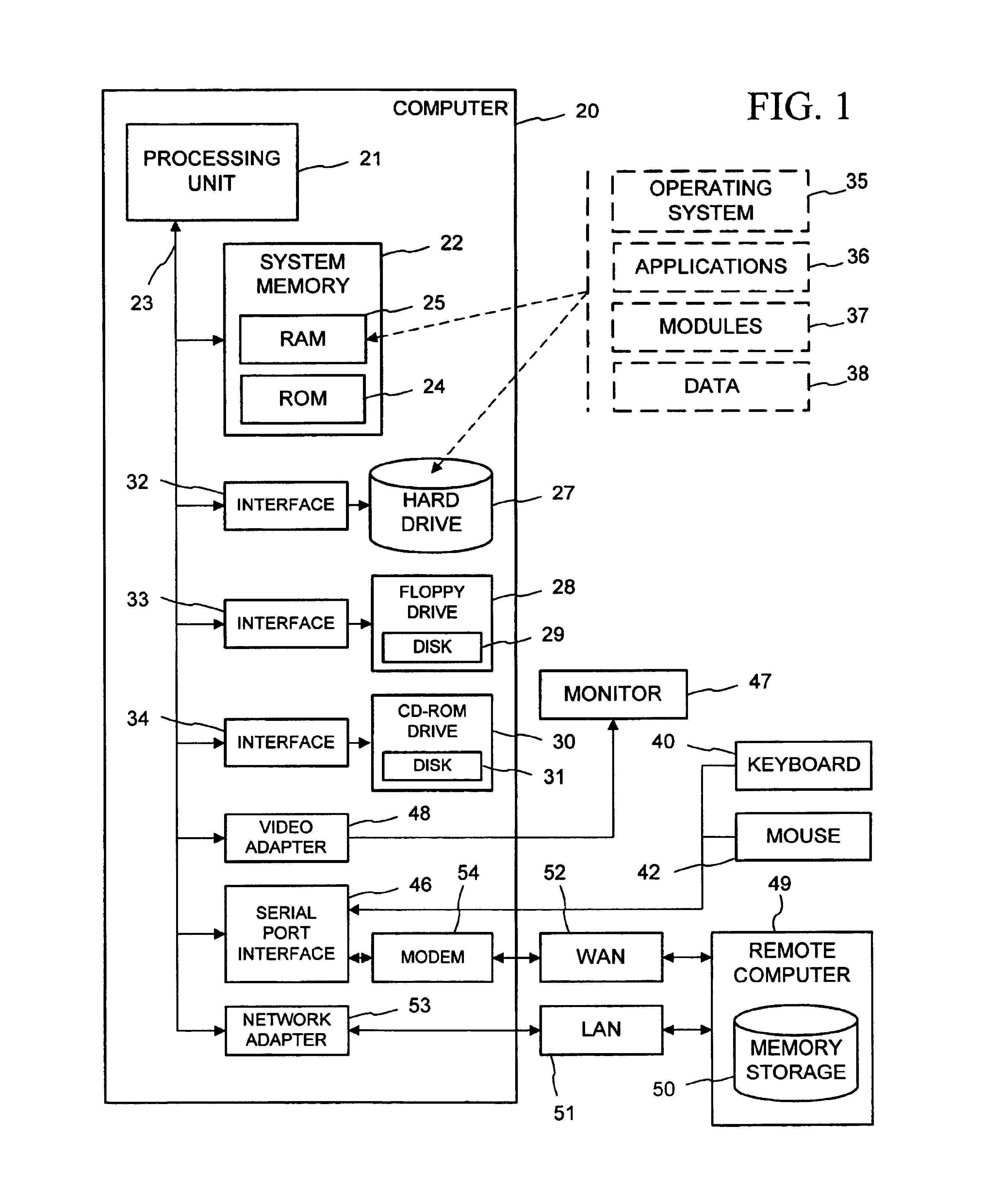Profile-driven data layout optimization
- Summary
- Abstract
- Description
- Claims
- Application Information
AI Technical Summary
Benefits of technology
Problems solved by technology
Method used
Image
Examples
Embodiment Construction
The invention is directed toward a method and system for laying out data members of software objects. In one embodiment illustrated herein, the invention is incorporated into a runtime environment associated with the “COM+” component of an operating system entitled “MICROSOFT WINDOWS 2000,” both marketed by Microsoft Corporation of Redmond, Wash. Briefly described, this software is a scaleable, high-performance network and computer operating system providing an object execution environment for object programs conforming to COM and other specifications. COM+ also supports distributed client / server computing. The COM+ component incorporates new technology as well as object services from prior object systems, including the MICROSOFT Component Object Model (COM), the MICROSOFT Distributed Component Object Model (DCOM), and the MICROSOFT Transaction Server (MTS).
Exemplary Operating Environment
FIG. 1 and the following discussion are intended to provide a brief, general description of a su...
PUM
 Login to View More
Login to View More Abstract
Description
Claims
Application Information
 Login to View More
Login to View More - R&D
- Intellectual Property
- Life Sciences
- Materials
- Tech Scout
- Unparalleled Data Quality
- Higher Quality Content
- 60% Fewer Hallucinations
Browse by: Latest US Patents, China's latest patents, Technical Efficacy Thesaurus, Application Domain, Technology Topic, Popular Technical Reports.
© 2025 PatSnap. All rights reserved.Legal|Privacy policy|Modern Slavery Act Transparency Statement|Sitemap|About US| Contact US: help@patsnap.com



